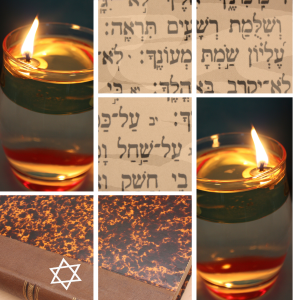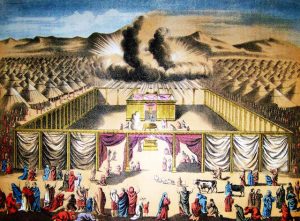There is an age-old custom for Jewish children to begin their learning of scripture with the difficult book of Vayikra (Leviticus). At first glance, this custom seems strange. The general topics include Temple offerings and spiritual purity. It isn’t an easy book. When choosing which book of the Torah to begin with, the obvious choice would seem to be Genesis, the Beginning, the story of creation which also offers a plethora of entertaining narratives- or perhaps Exodus, which discusses the making of the Jewish nation.
Indeed, this question was asked, and answered, during the times of the early sages “Why do young school children begin their Chumash learning with Vayikra and not with Bereishis (Genesis)? Because small children are innocent and pure, and Vayikra discusses the offerings, that are pure, unblemished, and which restore spiritual purity to a person. Therefore, it is fitting that the pure begin their education with the topic of purity.
Along the same lines, Vayikra is sometimes called “the book of holiness and sanctity,” for that is its theme. The English term for holiness brings with it a variety of connotations and imagery- much of which comes from other cultures.
I have often asked people to tell me what images or words come to mind when they hear the word “holy” and the answers I usually hear are far from anything Jewish. We Jews are profoundly affected by the culture around us!
The Jewish concept of holiness, kedusha, carries an entirely different flavor. While the theme of holiness is featured most prominently in the book of Leviticus, the root word “kadosh” permeates other areas of Torah and rabbinical literature. It appears in the standard blessings upon commandments (“asher kid’shanu”) and appears throughout our prayers, “Kadosh, Kadosh,…”. The term for marriage is “kiddushin”, the name for the Temple, “Beis Hamikdash”, and so on, the examples abound.
All of this is suggesting that the Jewish concept of holiness is not simply an abstract religious term but extends to our daily activities.
What does it mean for something to be “holy”?
On the one hand to be holy is to be distinctly removed from the physical, literally meaning “separate.” This characteristic is reserved for the Creator, Who is entirely transcendent – separate from creation. We also attain that title when we separate ourselves from excessive involvement with physicality.
How does it work?
To begin with, the commentaries relate a type of holiness that comes only through human action.
- On one level, the holiness of the land of Israel is brought about through the observance of the unique commandments observed within its borders.
- Likewise, the Shabbat day is made holy through man’s sanctification as in “Remember the Shabbat day to make it holy…”
- The human being fulfills the command to “Be holy, for I your G-d, am holy” by refraining from certain activities, by mastering one’s natural tendencies, or through noble intent behind action.
Yet there are also references to an inherent holiness, one that is independent of our action either because it is the essence of the place, time or object.
- In this vein, Maimonides writes, “why do I say that the original consecration sanctified the Temple and Jerusalem for eternity… Because the sanctity of the Temple and Jerusalem stems from the Shechinah which can never be nullified… as the Talmud declares: (Megillah 28a) ‘Even though they have been devastated, their sanctity remains.’
This is referring to a holiness within the land of Israel and the Temple mount that, once present, can never be nullified through one’s deeds.
- The same idea holds true in time and with people: there is holiness inherent within the Shabbat and festive days, irrespective of human experience or embrace.
- During our prayer services, the Kohanim ascend the platform to bless the congregation and utter the famous blessing which states “who has sanctified us with the holiness of Aaron”- a quality that is inherited, not earned.
To be sure, to declare that something or someone has a quality of holiness certainly does not imply that it needs to be worshiped! We only worship G-d. Yet the Biblical, legal, philosophical, and mystical sources alike speak of the dissemination of holiness over creation, over this world of ours, in its above mentioned dimensions of time, space, and the human being.
Another aspect of holiness is that, in Jewish law, there are different levels and gradations of holiness.
- In the land of Israel, for example, the highest level of holiness was the site where the “Holy of Holies” stood. Providing the practical application in Jewish law, Maimonides writes: “the land of Israel has ten gradations of holiness, each higher than the preceding level.”
- Likewise, concerning objects used to perform a mitzvah, the Mishna states: “Objects used for the performance of a mitzvah may be thrown away, [since no sanctity attaches to the object after its use.] But objects which are accessories to sacred items cannot be discarded…”
- The highest level within these objects is the sanctity of the Torah Scroll.
- The latter is a phenomenon in Jewish culture and law that we take for granted. The simple physical materials of ink and parchment, when combined to form a Torah scroll in the prescribed manner, are wondrously transformed into a “holy object” that has numerous implications in how it is handled and respected.
Indeed, this teaching of holiness is the Jewish child’s first visual introduction to Torah study!
As the Torah is carried through the aisles of the synagogue, a Jewish child watches as the people rise and extend their hands to kiss the Torah. The value placed on this object and the tender attention given to it is more than words can convey.
The awareness of holiness in the child later develops into a more academic and sophisticated discussion. But the intuitive appreciation, one that defies logic and reaches to the core, never leaves. Indeed, there are moving stories of simple Jews rushing into burning synagogues in Germany and Poland to save Torah scrolls.
In conclusion, even the most rational Jewish philosophers and codifiers of law devote attention to clarifying these levels of holiness, within a concrete and logical system. This combination of the legal and rational intertwined in the ethereal and mystical is one of the beautiful aspects of Jewish thought.
Finally, the complexity of the book of Leviticus, as we mentioned above, sends this message to the child and adult alike. The child, innocent and pure, initially takes the holiness for granted and then learns to develop his mind while the sophisticated adult must strip away the layers of complexity and foreign ideologies to revisit “the call” of Vayikra – to stay holy and pure in our thoughts, speech and actions. This is what the Torah requires of us – to be a “Holy People”.
Sincerely,
Rabbi Yerachmiel Fried


